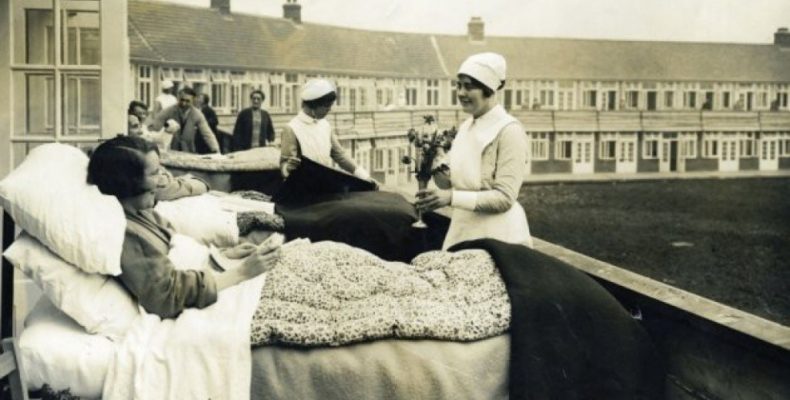In a series of posts giving a frank account of experiences on the NHS frontline, Sally Williams hears from Dr Jonathan Bennett, Honorary Professor of Respiratory Sciences, University of Leicester, Respiratory Consultant at Glenfield Hospital and Chair of the British Thoracic Society.
Here’s what he said about how his unit has been preparing for the coronavirus pandemic in the week beginning 23 March 2020.
The NHS never anticipated it would have to manage an infection-related pandemic. Tuberculosis, polio, cholera, typhoid, diphtheria, are all uncommon in the UK. NHS hospitals are not designed with infectious diseases in mind. Consequently, in preparing our response to the coronavirus pandemic, we’ve been caught out by several things.
Protective equipment
Last week, it was unclear how to get personal protective equipment (PPE) as there wasn’t enough on the ward. Then the recommendations around PPE changed, from using a FFP3 respirator to a surgical face mask. The PPE has now arrived, but we’ve confronted other problems.
There is nowhere to put the protective clothing on. You’re supposed to do it in a clean area, but there isn’t one. We need an atrium and a sink. Instead I’m having to put the PPE on in the corridor before I go into a side room and then take it off whilst still in the room, as far from the patient bedside as possible.
Medical waste bags were left hanging off trolleys and work surfaces as we didn’t have enough bins outside rooms to put our surgical masks. That’s now been sorted and bins have arrived, but PPE continues to create a huge amount of anxiety amongst staff.
We’ve been told to wash our clothes at the end of each shift. There aren’t any surgical scrubs to wear. Suddenly wearing clothes that are dry-clean only becomes an issue!
Ward environment
We are well-resourced for managing coronavirus in comparison to many hospitals. We are a large respiratory unit with our own respiratory take – which means we can admit patients with respiratory symptoms straight to dedicated respiratory wards.
Patients who test positive for coronavirus are cohorted on to one ward. It’s an extra capacity ward, usually opened to deal with winter pressures. Its ventilation system turns over the air in bays and side rooms five or six times an hour. This is needed to minimise the aerosol spread of the virus, where small particles are released into the atmosphere.
Some hospitals won’t have such good ventilation systems and are relying on opening windows instead. It’s like the old days of the tuberculosis epidemic where patients were put outside to sit in the sunshine.
Staff morale
I have a lovely team. The ward for coronavirus patients is mostly staffed by bank nurses and agency doctors. I’m trying to keep the doctors on-board, because I’m mindful they could easily up and go and then we’d really struggle. We’ve introduced a weekly bake-off (I made flapjacks!) and I’m buying coffees and generally trying to keep morale up.
There is so much anxiety about coronavirus. I’m quite level, but a lot of my colleagues are on edge. There’s great awareness of one’s own mortality and lots of apocryphal stories of doomed healthcare workers. I’m having to use some of my own stores of resilience to help keep others afloat. There’s no downtime from coronavirus; when we’re not at the hospital, it’s all over the news. I’ve advised colleagues to steer clear of social media.
At times I feel overwhelmed and worried for myself. But I’m trying to focus on the things that are within my gift and to block out things that are beyond my control. It means focusing on doing a good job and getting patients well enough to go home.
As told to Sally Williams
Image: A newspaper cutting shows the TB hospital at Papworth in 1932 where patients were pushed onto balconies for fresh air. Credit: Cambridgeshire Archives

